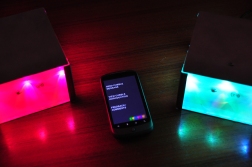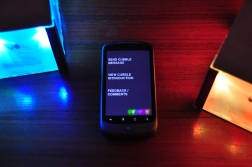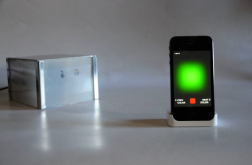[ | E-mail |
Contact: Connie Hughes
connie.hughes@wolterskluwer.com
646-674-6348
Wolters Kluwer Health
Marker called ELTD1 reflects new blood vessel formation associated with brain cancers
Philadelphia, Pa. (January 16, 2013) Researchers using sophisticated genetic testing techniques have identified a promising new biomarker for diagnosis of gliomathe most common type of malignant brain tumor, reports the January issue of Neurosurgery, official journal of the Congress of Neurological Surgeons. The journal is published by Lippincott Williams & Wilkins, a part of Wolters Kluwer Health.
The biomarker ELTD1 "may serve as an additional biomarker for gliomas in preclinical and clinical diagnosis of gliomas," according to the study by Rheal A. Towner of Oklahoma Medical Research Foundation, Oklahoma City.
Biomarker Reflects Rapid Blood Vessel Development
Dr. Towner and colleagues used advanced "data mining and bioinformatic" techniques to evaluate genes and gene products potentially associated with gliomas. Glioma is a general term referring to tumors originating in the glial cells of the brain and spinal cord. Gliomas make up about 40 percent of all brain tumors and 80 percent of central nervous system cancers. Especially for advanced (high-grade) gliomas such as glioblastoma multiforme (GBM), expected survival is very poor.
Out of nearly 200 possible markers analyzed, ELTD1 was identified as the strongest candidate for a significant association with glioma. There's special interest in ELTD1 because it is linked to development of new blood vessels, or angiogenesisa characteristic of rapidly growing cancers. (ELTD1 stands for "epidermal growth factor, latrophilin and seven transmembrane domain-containing protein 1.")
Studies in human patients suggested that ELTD1 was strongly associated with gliomas. ELTD1 was more highly expressed in specimens from 50 patients with high-grade gliomas, compared to 21 patients with lower-grade gliomas.
Higher levels of ELDT1 expression were associated with a higher grade of glioma, and with lower survival. ELTD1 compared well with other known markers of glioma, such as vascular endothelial growth factor. It also appeared to be associated with one specific subtype of GBM (mesenchymal GBM).
In further experiments, the researchers transplanted glioma cells into the brains of rats. As the tumors developed, they showed elevated levels of ELTD1, compared to normal brain tissue. The rat studies included evaluation of a "molecular MRI technique" for measuring ELDT1 levels in the living brain.
A Helpful Marker for Glioma Diagnosis?
Even with modern treatments, GBM and other malignant gliomas are devastating cancers. In recent years, advances in research have led to the identification of biomarkers associated with glioma. Dr. Towner and colleagues write, "Validation of more biomarkers for GBM could be beneficial in the diagnosis and therapeutic intervention of this disease."
With further study, ELTD1 could become a useful new marker of glioma, including GBM. Gliomas show increased expression of ELTD1, and higher levels of ELTD1 expression are associated with higher tumor grade and a worse prognosis. "Any increase in ELTD1 will more than likely be associated with increased angiogenesis or neovascularization [new blood vessel development] in gliomas," the researchers write.
Although the findings are only preliminary, Dr. Towner and coauthors suggest that ELTD1 could be useful in detecting the presence and grade of gliomasparticularly high-grade gliomas such as GBM. They conclude, "[T]his biomarker may play an important diagnostic role in addition to currently used markers for gliomas, particularly as a histological marker for identifying vascular proliferation."
###
About Neurosurgery
Neurosurgery, the Official Journal of the Congress of Neurological Surgeons, is your most complete window to the contemporary field of neurosurgery. Members of the Congress and non-member subscribers receive 3,000 pages per year packed with the very latest science, technology, and medicine, not to mention full-text online access to the world's most complete, up-to-the-minute neurosurgery resource. For professionals aware of the rapid pace of developments in the field, Neurosurgery is nothing short of indispensable.
About Lippincott Williams & Wilkins
Lippincott Williams & Wilkins (LWW) is a leading international publisher of trusted content delivered in innovative ways to practitioners, professionals and students to learn new skills, stay current on their practice, and make important decisions to improve patient care and clinical outcomes. LWW is part of Wolters Kluwer Health, a leading global provider of information, business intelligence and point-of-care solutions for the healthcare industry. Wolters Kluwer Health is part of Wolters Kluwer, a market-leading global information services company with 2011 annual revenues of 3.4 billion ($4.7 billion).
?
AAAS and EurekAlert! are not responsible for the accuracy of news releases posted to EurekAlert! by contributing institutions or for the use of any information through the EurekAlert! system.
[ | E-mail |
Contact: Connie Hughes
connie.hughes@wolterskluwer.com
646-674-6348
Wolters Kluwer Health
Marker called ELTD1 reflects new blood vessel formation associated with brain cancers
Philadelphia, Pa. (January 16, 2013) Researchers using sophisticated genetic testing techniques have identified a promising new biomarker for diagnosis of gliomathe most common type of malignant brain tumor, reports the January issue of Neurosurgery, official journal of the Congress of Neurological Surgeons. The journal is published by Lippincott Williams & Wilkins, a part of Wolters Kluwer Health.
The biomarker ELTD1 "may serve as an additional biomarker for gliomas in preclinical and clinical diagnosis of gliomas," according to the study by Rheal A. Towner of Oklahoma Medical Research Foundation, Oklahoma City.
Biomarker Reflects Rapid Blood Vessel Development
Dr. Towner and colleagues used advanced "data mining and bioinformatic" techniques to evaluate genes and gene products potentially associated with gliomas. Glioma is a general term referring to tumors originating in the glial cells of the brain and spinal cord. Gliomas make up about 40 percent of all brain tumors and 80 percent of central nervous system cancers. Especially for advanced (high-grade) gliomas such as glioblastoma multiforme (GBM), expected survival is very poor.
Out of nearly 200 possible markers analyzed, ELTD1 was identified as the strongest candidate for a significant association with glioma. There's special interest in ELTD1 because it is linked to development of new blood vessels, or angiogenesisa characteristic of rapidly growing cancers. (ELTD1 stands for "epidermal growth factor, latrophilin and seven transmembrane domain-containing protein 1.")
Studies in human patients suggested that ELTD1 was strongly associated with gliomas. ELTD1 was more highly expressed in specimens from 50 patients with high-grade gliomas, compared to 21 patients with lower-grade gliomas.
Higher levels of ELDT1 expression were associated with a higher grade of glioma, and with lower survival. ELTD1 compared well with other known markers of glioma, such as vascular endothelial growth factor. It also appeared to be associated with one specific subtype of GBM (mesenchymal GBM).
In further experiments, the researchers transplanted glioma cells into the brains of rats. As the tumors developed, they showed elevated levels of ELTD1, compared to normal brain tissue. The rat studies included evaluation of a "molecular MRI technique" for measuring ELDT1 levels in the living brain.
A Helpful Marker for Glioma Diagnosis?
Even with modern treatments, GBM and other malignant gliomas are devastating cancers. In recent years, advances in research have led to the identification of biomarkers associated with glioma. Dr. Towner and colleagues write, "Validation of more biomarkers for GBM could be beneficial in the diagnosis and therapeutic intervention of this disease."
With further study, ELTD1 could become a useful new marker of glioma, including GBM. Gliomas show increased expression of ELTD1, and higher levels of ELTD1 expression are associated with higher tumor grade and a worse prognosis. "Any increase in ELTD1 will more than likely be associated with increased angiogenesis or neovascularization [new blood vessel development] in gliomas," the researchers write.
Although the findings are only preliminary, Dr. Towner and coauthors suggest that ELTD1 could be useful in detecting the presence and grade of gliomasparticularly high-grade gliomas such as GBM. They conclude, "[T]his biomarker may play an important diagnostic role in addition to currently used markers for gliomas, particularly as a histological marker for identifying vascular proliferation."
###
About Neurosurgery
Neurosurgery, the Official Journal of the Congress of Neurological Surgeons, is your most complete window to the contemporary field of neurosurgery. Members of the Congress and non-member subscribers receive 3,000 pages per year packed with the very latest science, technology, and medicine, not to mention full-text online access to the world's most complete, up-to-the-minute neurosurgery resource. For professionals aware of the rapid pace of developments in the field, Neurosurgery is nothing short of indispensable.
About Lippincott Williams & Wilkins
Lippincott Williams & Wilkins (LWW) is a leading international publisher of trusted content delivered in innovative ways to practitioners, professionals and students to learn new skills, stay current on their practice, and make important decisions to improve patient care and clinical outcomes. LWW is part of Wolters Kluwer Health, a leading global provider of information, business intelligence and point-of-care solutions for the healthcare industry. Wolters Kluwer Health is part of Wolters Kluwer, a market-leading global information services company with 2011 annual revenues of 3.4 billion ($4.7 billion).
?
AAAS and EurekAlert! are not responsible for the accuracy of news releases posted to EurekAlert! by contributing institutions or for the use of any information through the EurekAlert! system.
Source: http://www.eurekalert.org/pub_releases/2013-01/wkh-nbm011613.php
david letterman march of dimes james randi wargames blake griffin dunk florida primary full force
 When political blogger Andrew Sullivan
When political blogger Andrew Sullivan 




 There are other things that Buffalo people are good about maintaining. Going to the dentist twice a year. Clothes to the dry cleaner. Flu shots. Taking the kids to your Buffalo doctor for a checkup before school starts.
There are other things that Buffalo people are good about maintaining. Going to the dentist twice a year. Clothes to the dry cleaner. Flu shots. Taking the kids to your Buffalo doctor for a checkup before school starts.